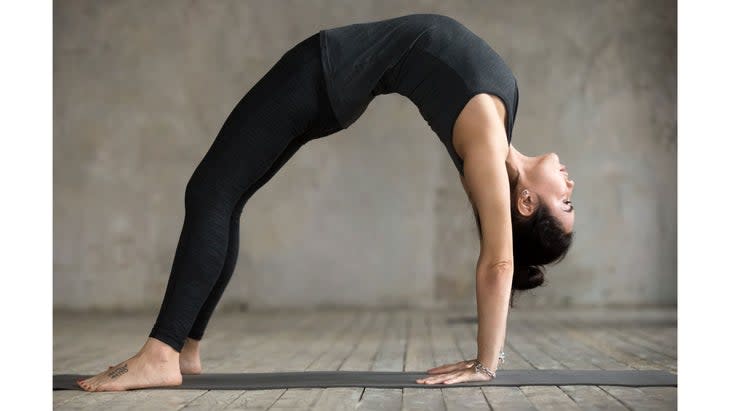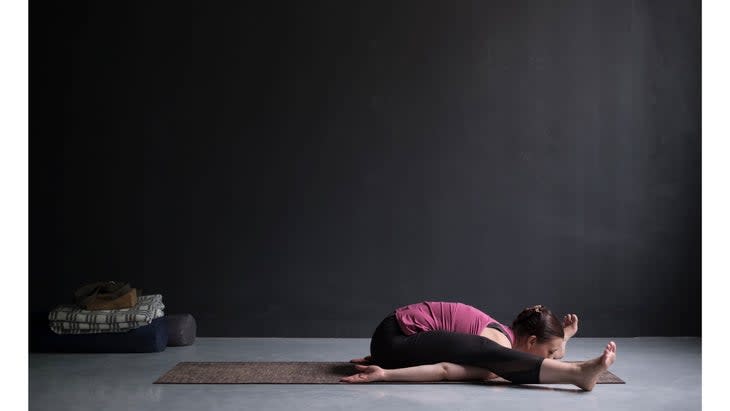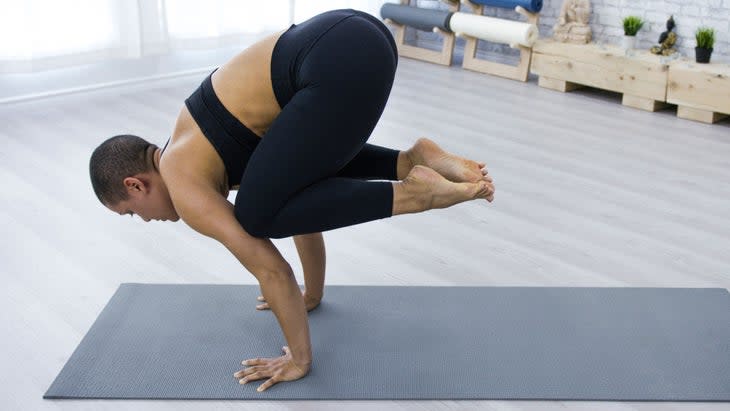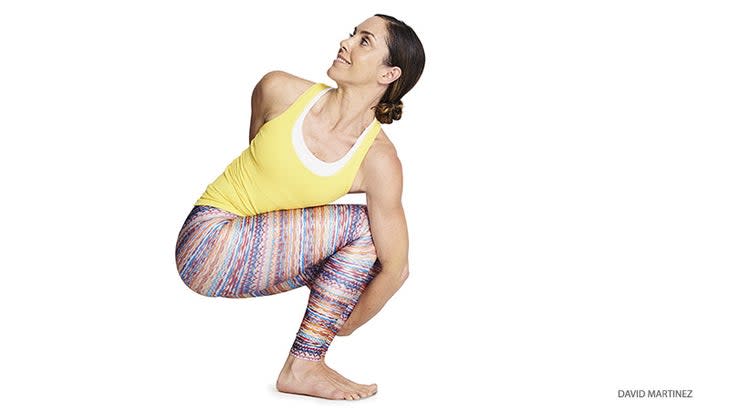You Might Be Approaching Counter Poses All Wrong. Here’s Another Way
When you bend a paper clip and immediately bend it in the opposite direction, over and over again, it gets weaker and weaker until...snap!
There's a common misconception in yoga that when you practice big poses, you should do the opposite movement right away. This is known as counter posing. For example, after you practice a big backbend, such as Wheel or Camel Pose, the counter pose would be a forward bend. Counter poses help to physically and energetically balance the effects of big poses--hopefully without negating the benefits.
Your body is more resilient than a paper clip, but you get the idea: You don't have to put your body through extremes. Let's find a middle ground, shall we?
While you might have experienced immediate counter poses in classes, such as drawing your knees to your chest immediately after a big backbend, what if you paused after a big pose and instead went very gradually in the opposite direction? What if you first identified what specific parts of your body need the counter pose instead of simply conforming your entire body into the opposite shape of what you just did?
Here are some examples of more gradual counter poses based on the specific actions demanded by each type of pose.
Counter poses for backbends

Urdhva Dhanurasana (Wheel Pose)
Similar backbends include: Ustrasana (Camel Pose), Dhanurasana (Bow Pose), and Eka Pada Rajakapotanasana (King Pigeon Pose)
Actions include:
Femurs press forward
Glutes engage
Common counter pose: Hugging knees to chest
Try these poses first: After you come down from Wheel Pose, rest in a neutral position for a moment by lying on your back with your legs outstretched or your knees bent and your feet planted on the mat. Because Wheel Pose is a big chest and hip flexor opener, many students (and teachers) are eager to do the typical counter pose of hugging the knees into the chest. But by first resting horizontally, you give your body time to neutralize the backbend instead of immediately doing the opposite.
When your system feels more settled, gradually come into poses that counter the movements specific to the actions the backbend produced. These could include:
Adho Mukha Svanasana (Downward Facing Dog Pose) to anchor the femurs after they moved forward.
Janu Sirsasana (Head-to-Knee Pose) to anchor the femurs and stretch the glutes one side at a time
Parsvottanasana (Intense Side Stretch or Pyramid Pose) to anchor the femurs and stretch the glutes one side at a time
Once the actions of the pose have been countered, you can hug your knees to your chest.
See also: The best--and safest--counter poses for backbends
Counter poses for forward bends

Kurmasana (Tortoise Pose)
Similar forward bends include: Paschimottanasana (Seated Forward Bold)
Actions include:
Hamstrings stretch
Muscles along spine stretch
Quads engage
Common counter pose: Purvottanasana (Reverse Plank or Upward Plank Pose)
Why you shouldn’t do it right away: When you come out of Tortoise Pose, pause in a neutral seated or supine position. Because Tortoise pose is so rounded, you eventually want to counter pose with a backbend, but the neutrality of simply sitting or laying down makes the journey less extreme.
Try these poses first: When you feel ready, gradually work into some gentle counter shapes, which could include:
Gently stretch the front of your body in Salamba Bhujangasana (Sphinx Pose)
Add a quad stretch from Ardha Bhekasana (Half Frog Pose)
Once you've covered the actions of the big pose, you can come into Purvottanasana.
See also: Fine-tune your forward bends
Counter poses for arm balances
Arm balances don't necessarily have counter poses, although many arm balances also feature another asana category, whether a forward fold, outer hip stretch, twist, etc.

Bakasana (Crow or Crane Pose)
Similar arm balances include: Firefly Pose (Tittibhasana) and Flying Pigeon Pose (Eka Pada Galavasana)
Actions include:
Core and hip flexors engage
Wrists flex
Spine rounds
Common counter pose: Ustrasana (Camel Pose)
Try these poses first: Release from Crow Pose and pause in Malasana (Squat or Garland Pose) or a neutral seated position. Because Bakasana is a forward bend balancing on your hands, the counter poses will gradually unwind toward a backbend. These poses could include:
Coming face down in Makarasana (Crocodile Pose)
Coming into Sphinx Pose and then taking a quad stretch in Ardha Bhekasana (Half Frog)
Gradually moving toward a bigger backbend, such as Dhanurasana (Bow Pose) or Purvottanasana (Reverse Plank)
Once you've covered the actions of the big pose, now try Camel Pose.
Counter poses for internal or external rotation of your arms
While not technically a category of asana, poses with internal or external rotation of your arms can benefit from a gentle unwinding toward counter poses.

Pasasana (Noose or Snare Pose)
Similar poses include: Anything with a bind, such as Bird of Paradise and the full expression of Parivrtta Parsvakonasana (Revolved Side Angle)
Actions include:
Internal rotation of arms
Deep flexion of hips, knees, and ankles
Try these poses first: Unwind from Pasasana and into a neutral seated or supine position. Because Pasasana so deeply internally rotates your shoulder, give your body a moment to settle before externally rotating your shoulder. After a few moments, try a modest externally rotated pose for the shoulders, such as:
Stretching the pecs and other muscles of the chest in Vasisthasana (Side Plank Pose) variation with one foot out in front to lessen the weight-bearing
Lying on your back with cactus-shape arms
Coming into Savasana with your palms face up
Become a member today to access our exclusive Pose Library, which blends expert insights from top teachers with video tutorials, variations, detailed anatomy illustrations, and more to take you beyond the basics and dive deeper into your practice. It’s a resource you’ll return to again and again.